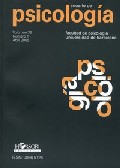How we experience immersive virtual environments: the concept of presence and its measurement
Resum
This paper reviews the concept of presence in immersive virtual environments, the sense of being there signalled by people acting and responding realistically to virtual situations and events. We argue that presence is a unique phenomenon that must be distinguished from the degree of engagement, involvement in the portrayed environment. We argue that there are three necessary conditions for presence: the (a) consistent low latency sensorimotor loop between sensory data and proprioception; (b) statistical plausibility: images must be statistically plausible in relation to the probability distribution of images over natural scenes. A constraint on this plausibility is the level of immersion; (c) behaviour-response correlations: Presence may be enhanced and maintained over time by appropriate correlations between the state and behaviour of participants and responses within the environment, correlations that show appropriate responses to the activity of the participants. We conclude with a discussion of methods for assessing whether presence occurs, and in particular recommend the approach of comparison with ground truth and give some examples of this.Descàrregues
Publicades
2009-12-02
Número
Secció
Dossier: Evaluación y tratamiento psicológico mediante realidad virtual y otras nuevas tecnologías
Llicència
El/la autor/a que publica en esta revista está de acuerdo con los términos siguientes:
El/la autor/a cede en exclusiva todos los derechos de propiedad intelectual al/la editor/a para todo el mundo y toda la duración de los derechos de propiedad intelectual vigentes aplicables.
El/la autor/a puede difundir una copia de sus artículos respetando la política de acceso libre de la revista.


